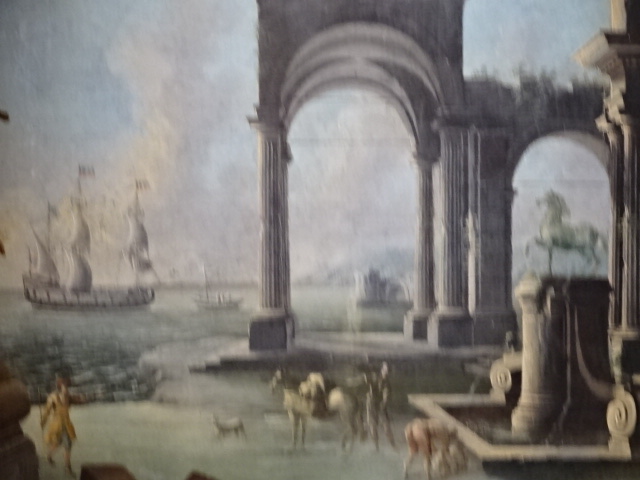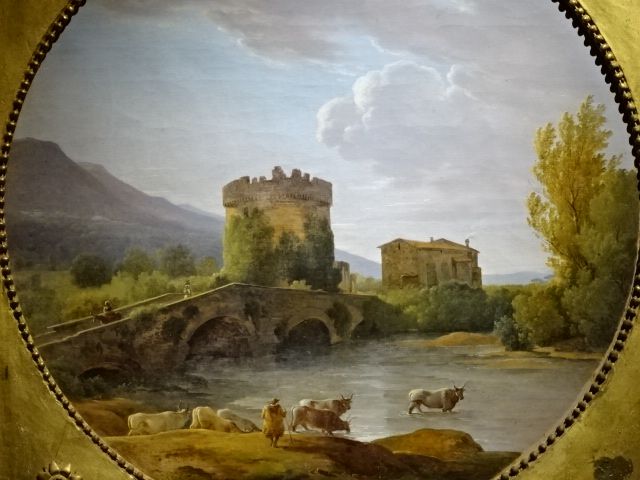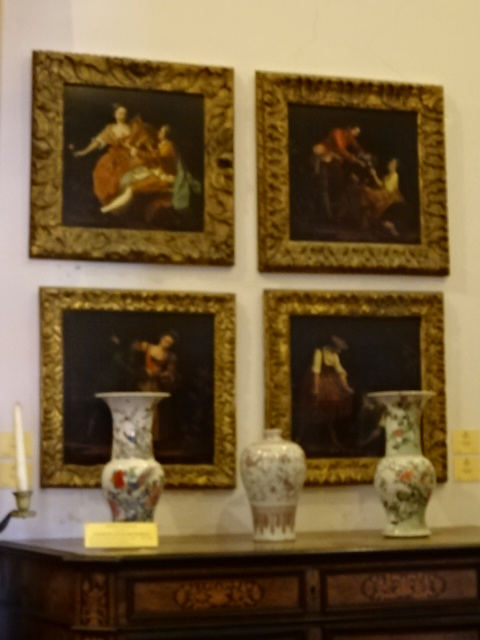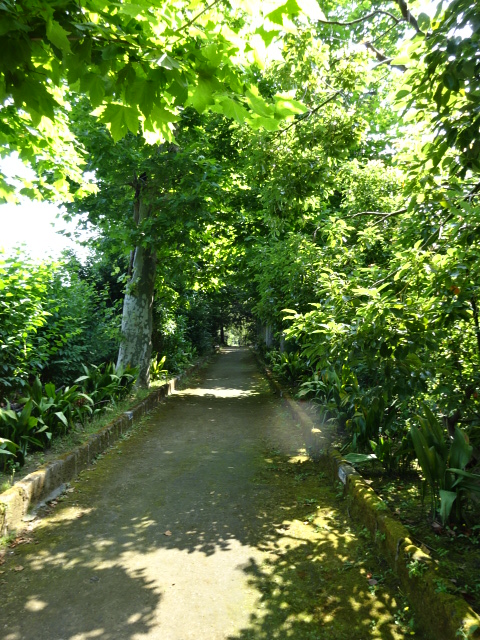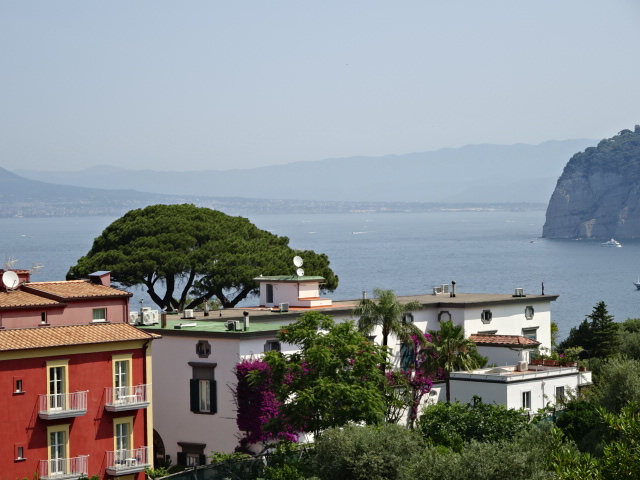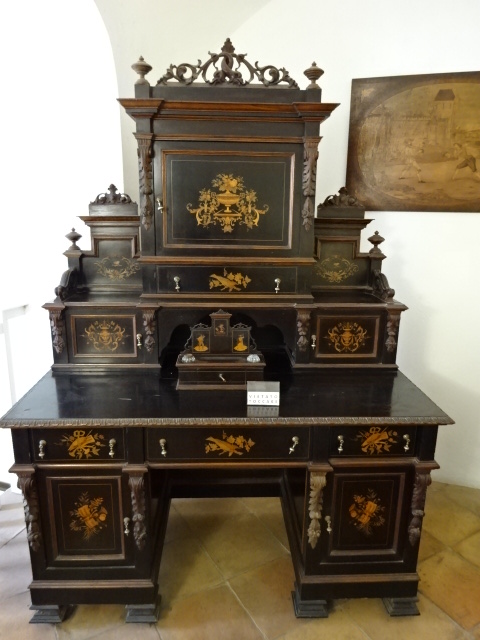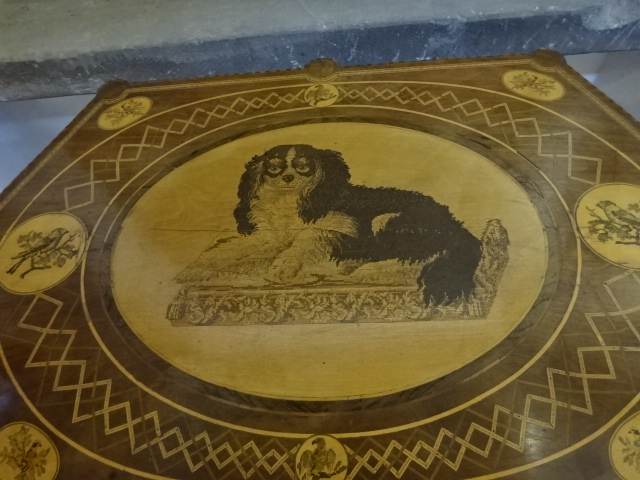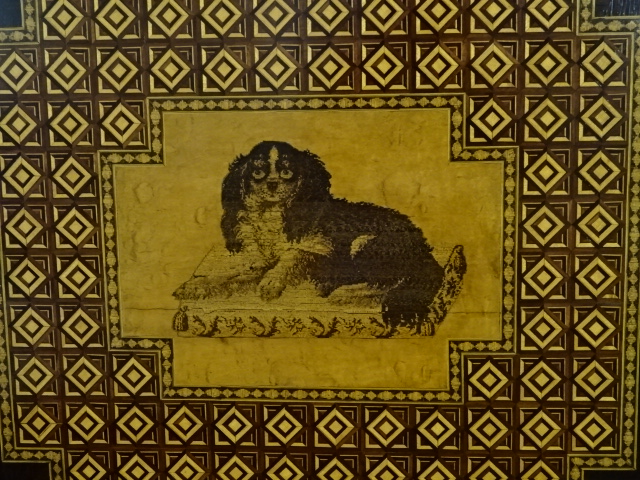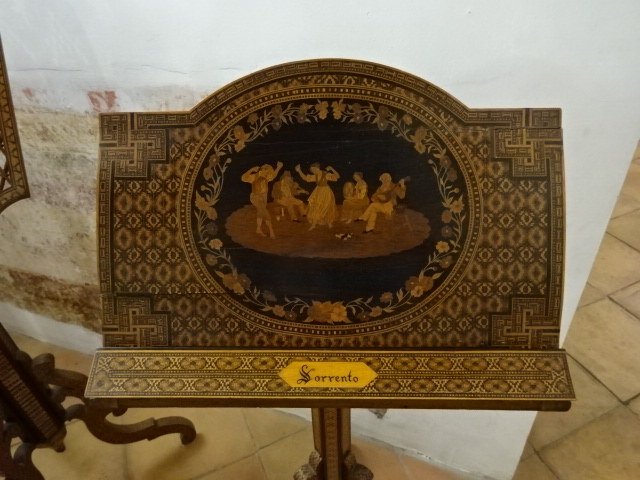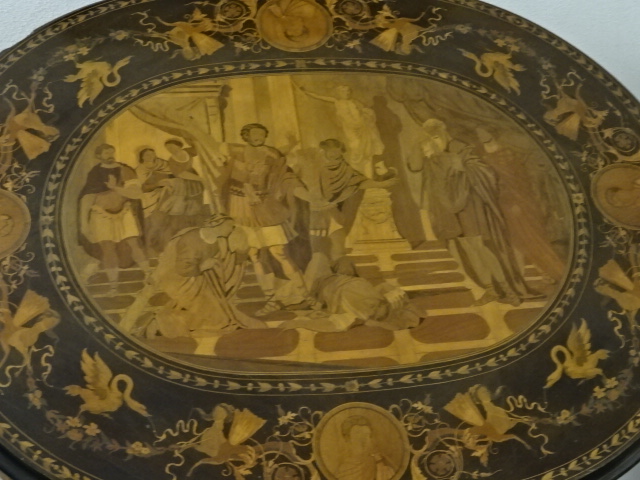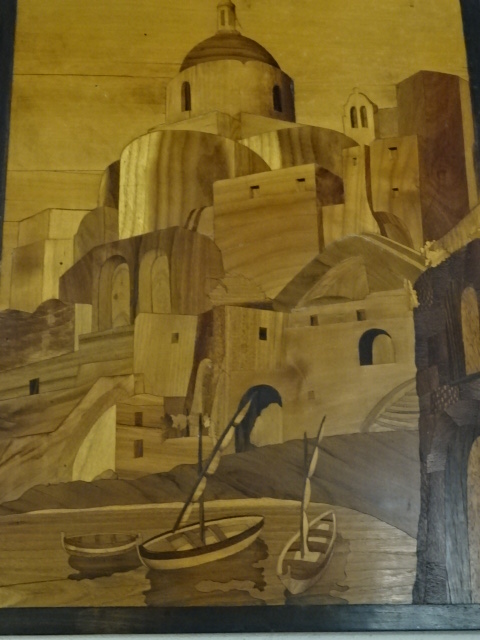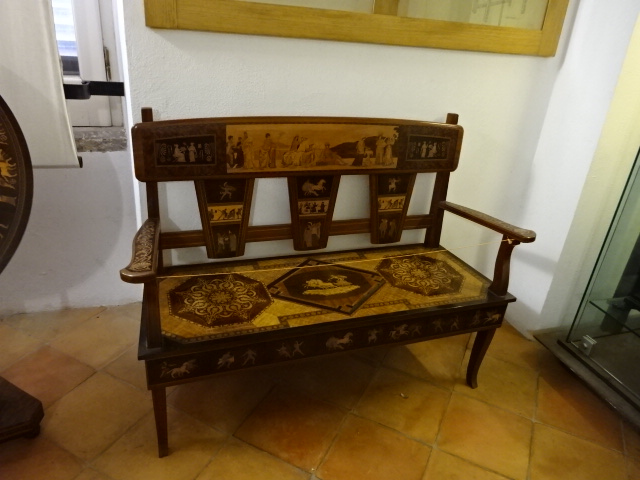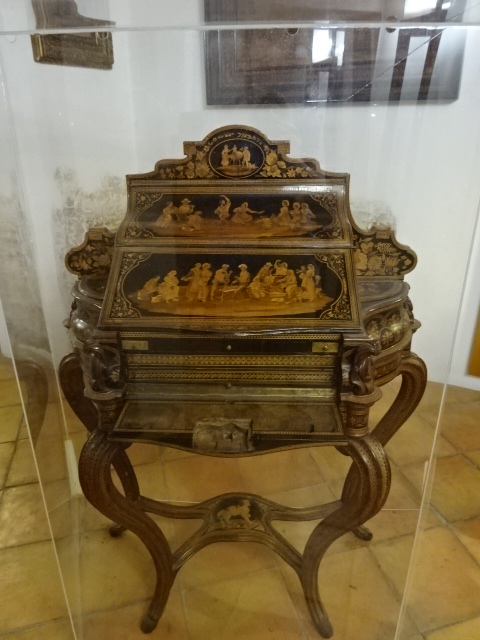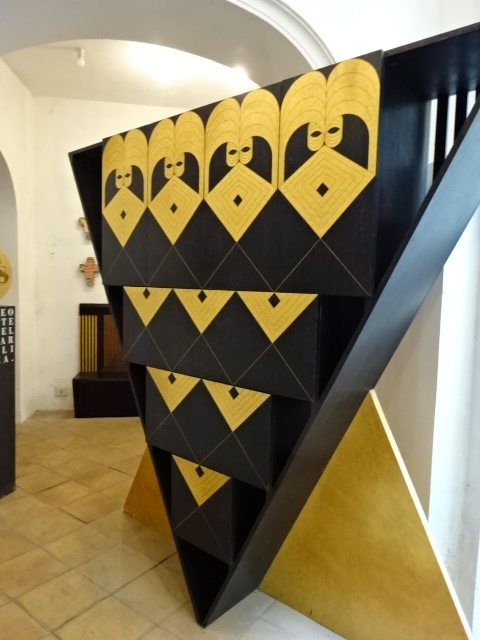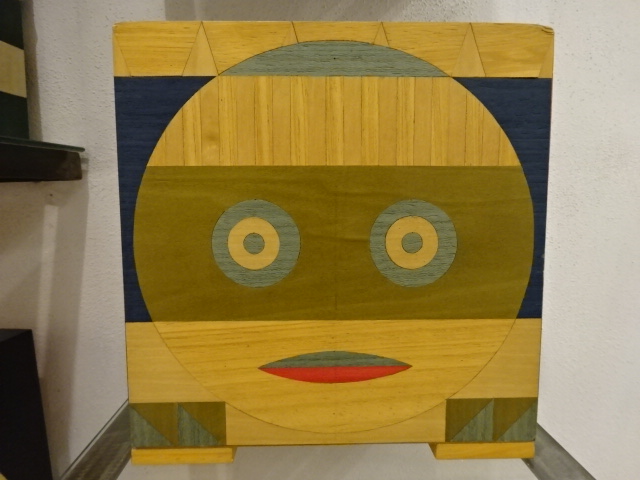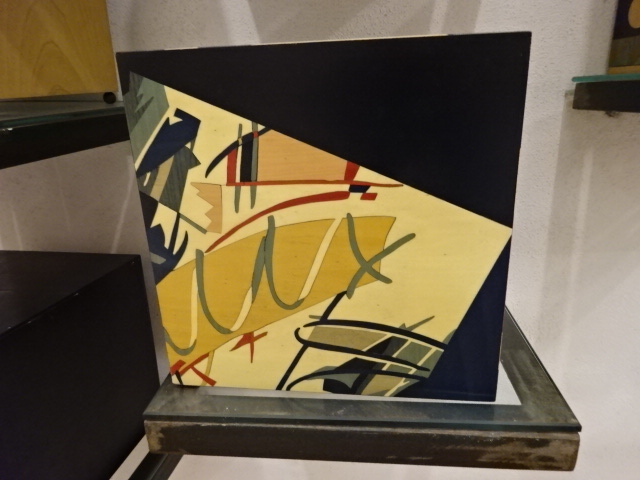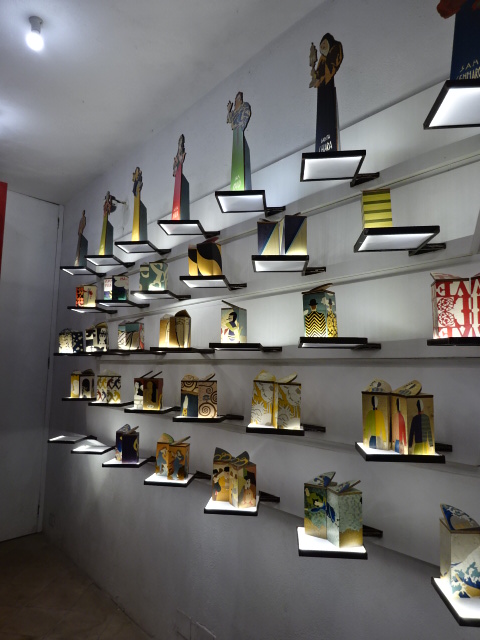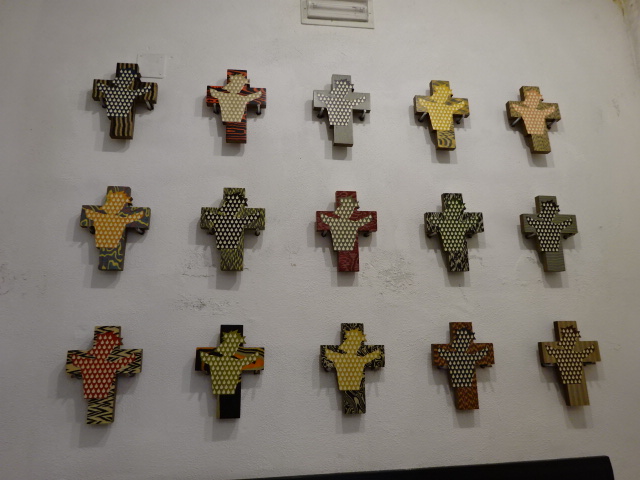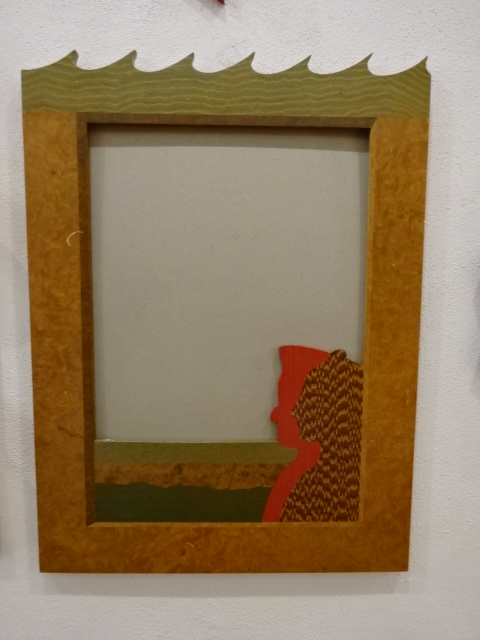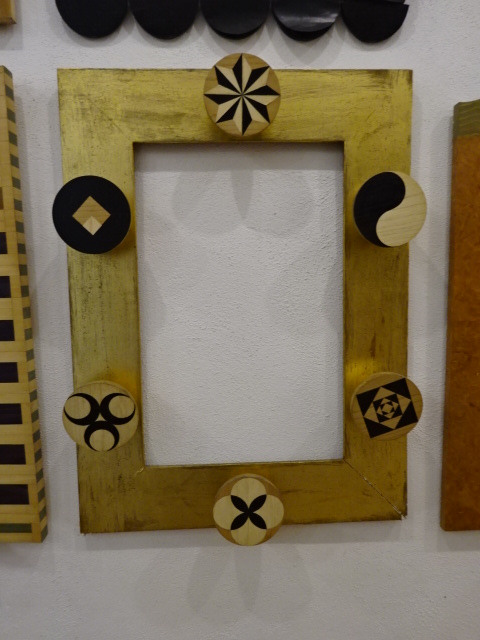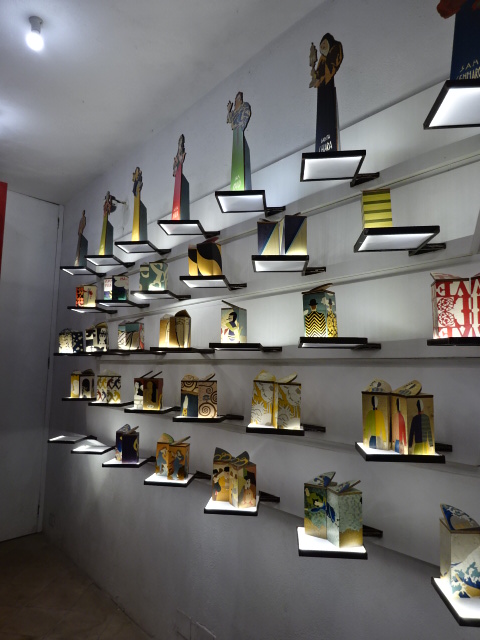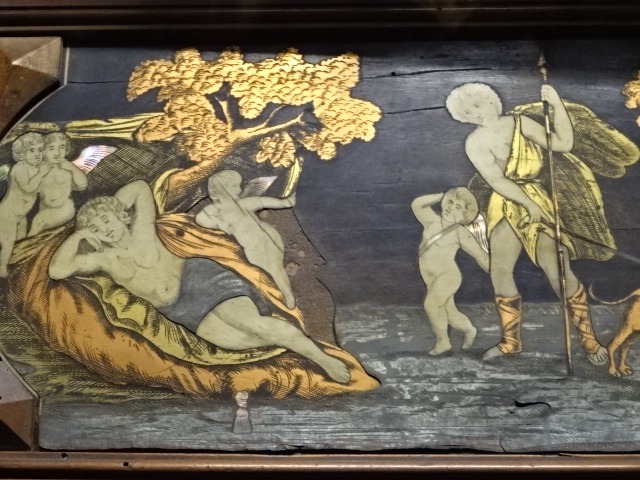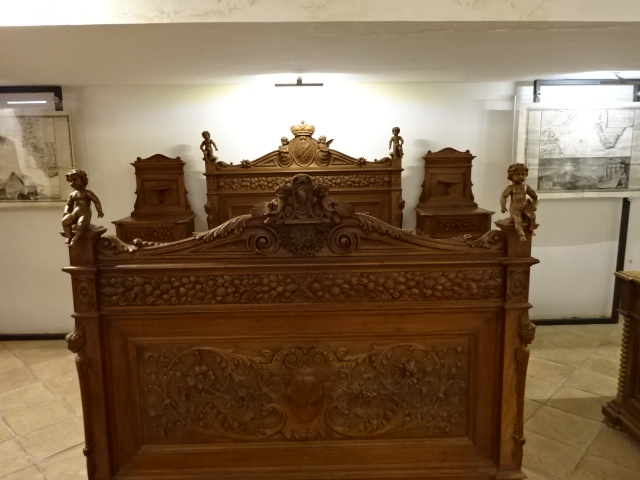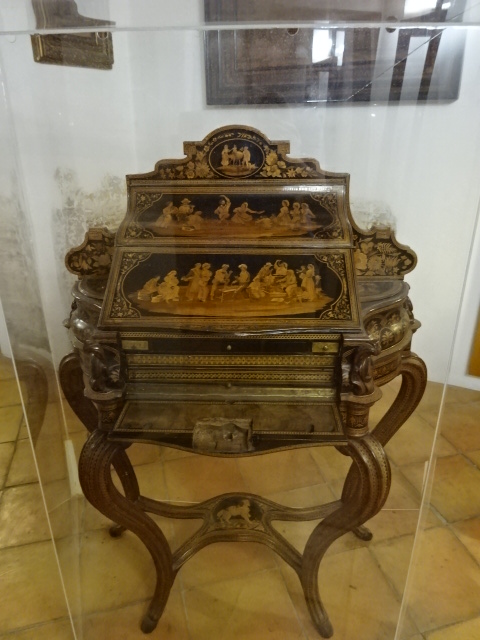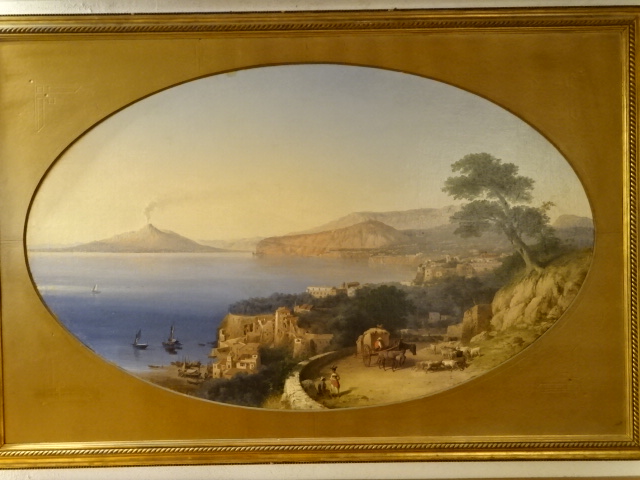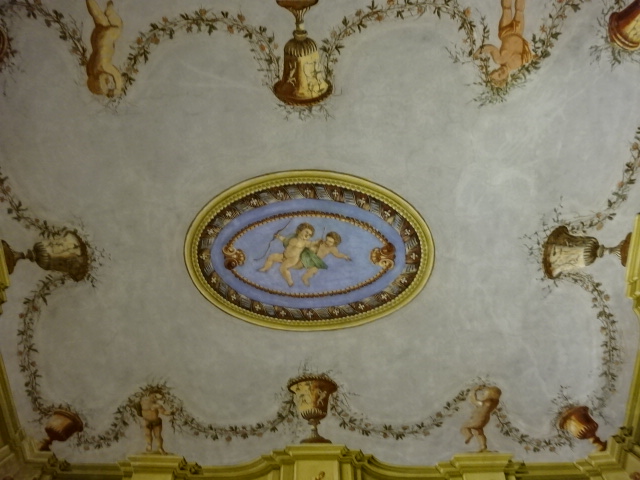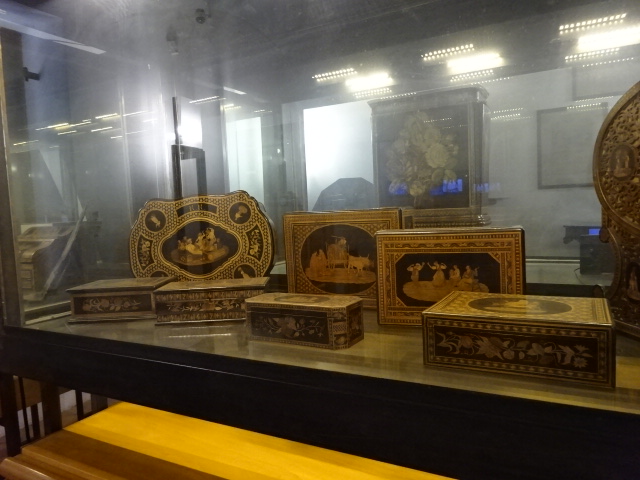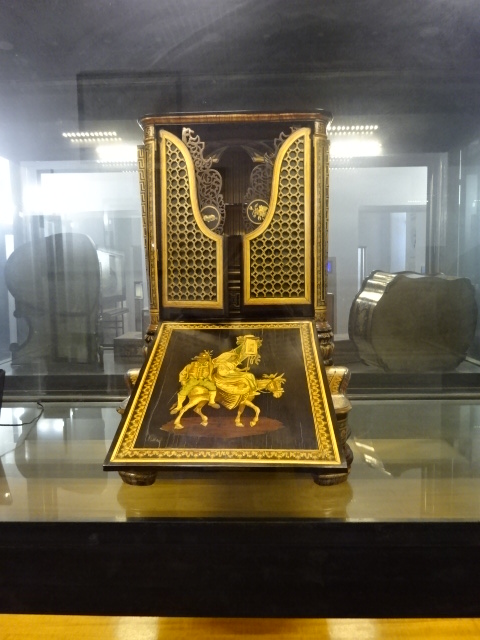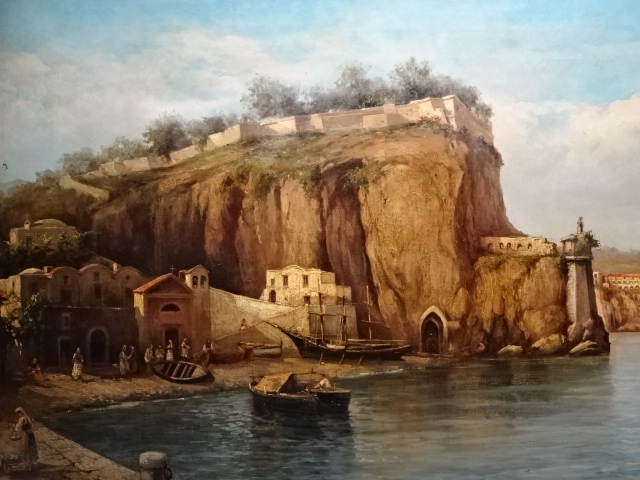
One of my favorite experiences when I am on vacation is visiting local museums. In Sorrento I was enthralled with the variety of the impressive collections in the provincial Correale Museum (Museo Correale di Terranova), especially with the landscape paintings that portrayed Italian sites. I saw archeological artifacts, ceramics, furniture, time pieces, silver, tapestries, manuscripts, paintings from the 15th to the 19th century and porcelain in 24 halls on three floors.
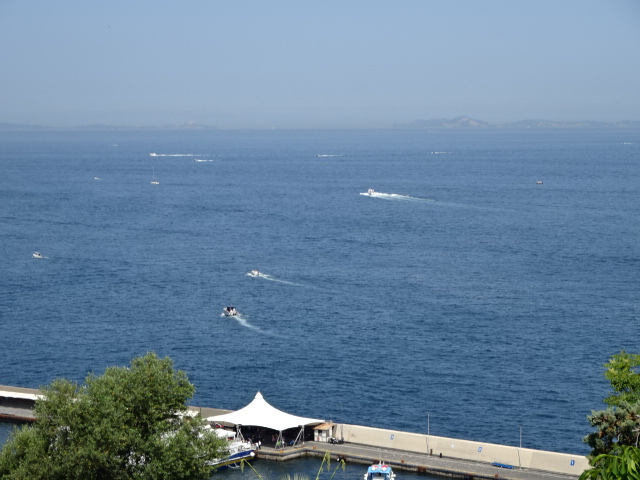
Opened since 1924, the museum is housed in a superb 17th century villa with a delightful garden of tropical plants and trees. A path leads to a terrace with stunning views of the sea. From the museum itself, I was able to gaze at tranquil views of the Gulf of Naples.
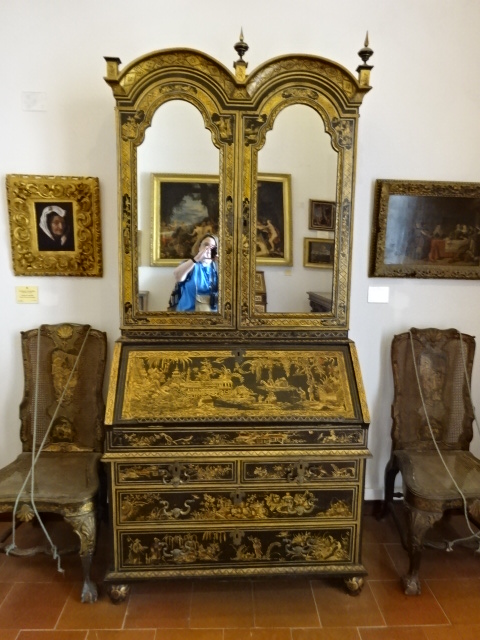
Furnishings from the 17th to 20th century caught my attention, especially the pieces adorned with intarsia and mosaics. The archeology section included Greek and Roman objects and ceramics as well as artifacts from the Middle Ages.
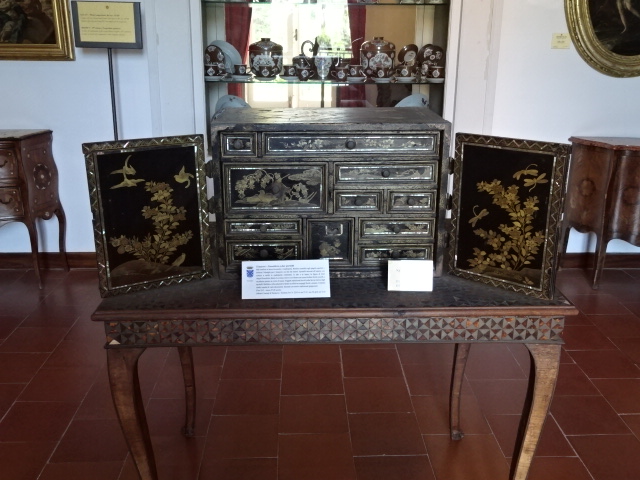
Some of my favorite places in the world are libraries. The one at this museum contained hundreds of 17th century manuscripts and volumes dealing with many subjects, from botany to archeology to Italian history.
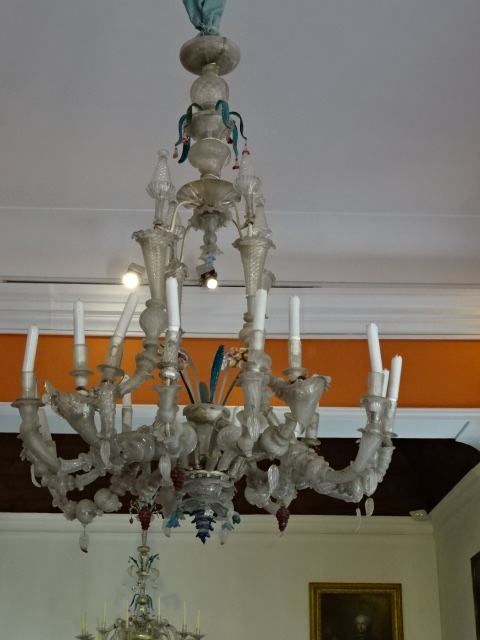
In the porcelain collection on the uppermost floor, I admired Oriental creations from the 17th and 18th centuries as well as Meissen and Sevres pieces. The School of Capodimonte was well-represented, too. Clocks and Italian glass hailed from the 18th century. Historical tapestries added to the museum’s impressive collection.
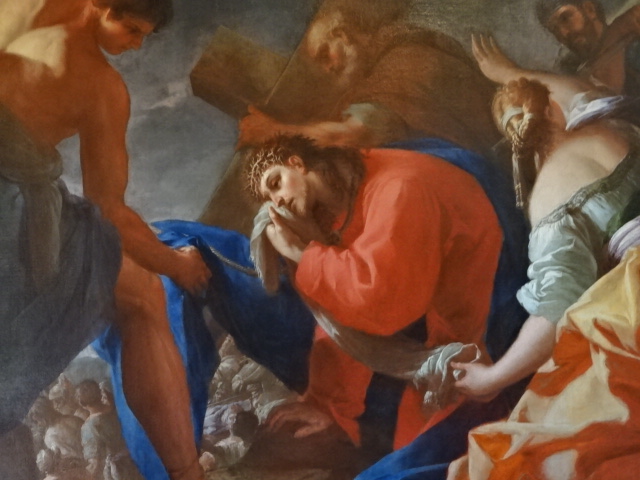
The paintings interested me the most. I saw works by both Flemish and other foreign artists. Two of the most renowned artists represented were Peter Paul Rubens and Camille Corot. Mannerist paintings were also displayed.
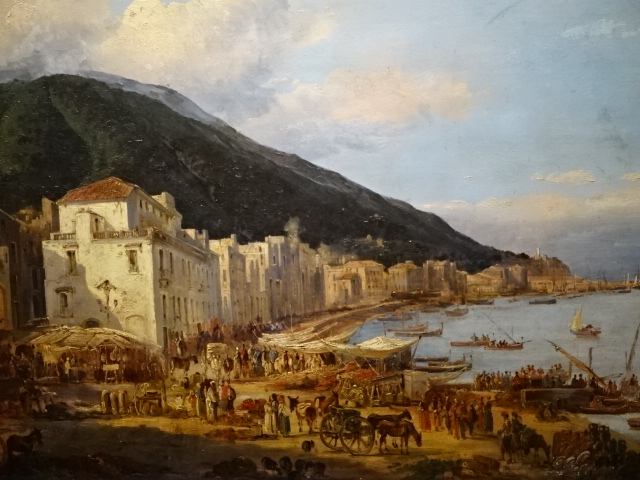
Both foreign and Italian artists created the landscape paintings. I was most impressed with the Italian works of the Posillipo School style. Hailing from the second half of the 18th century, these paintings depicted picturesque scenes inspired by foreign artists who had spent time in Naples, including William Turner. I especially liked the landscapes of cliffs and the tranquil sea dotted with row boats. Horse-drawn carriages made appearances on the shore in one painting that I had admired.
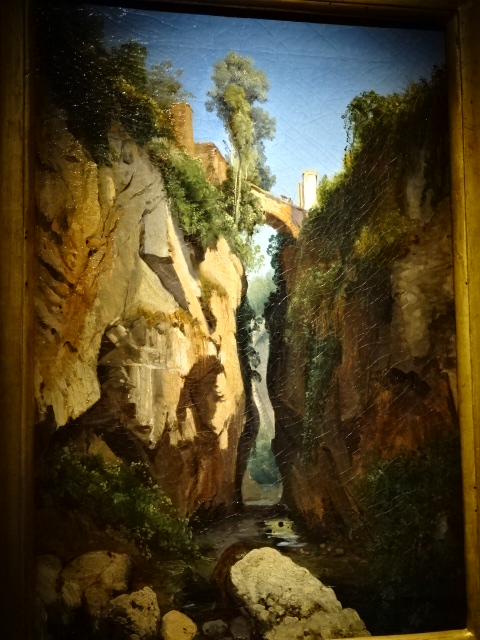
Sorrento certainly did not disappoint. This museum was just one of the highlights of my time there. The diversity of the collections was a big plus, and I was very enthusiastic to learn about the Posillipo School style.
Tracy A. Burns is a writer, proofreader and editor in Prague.
